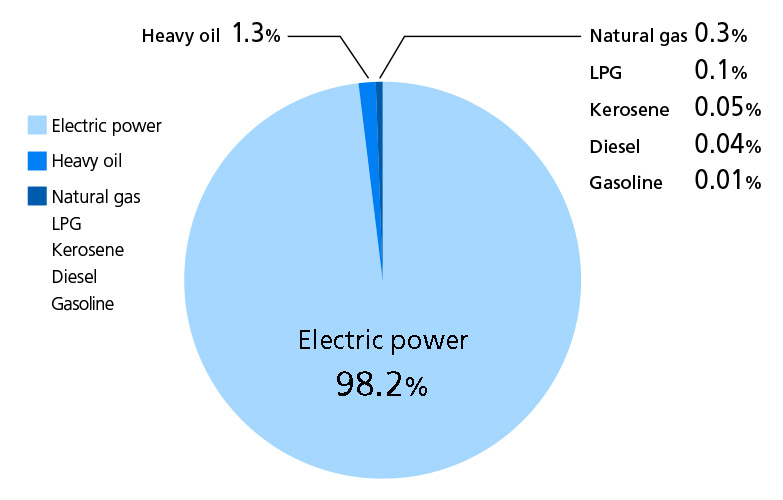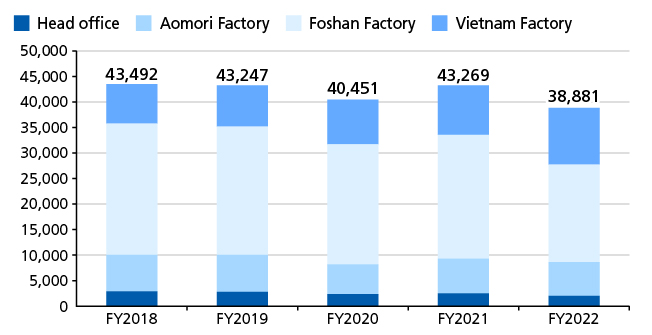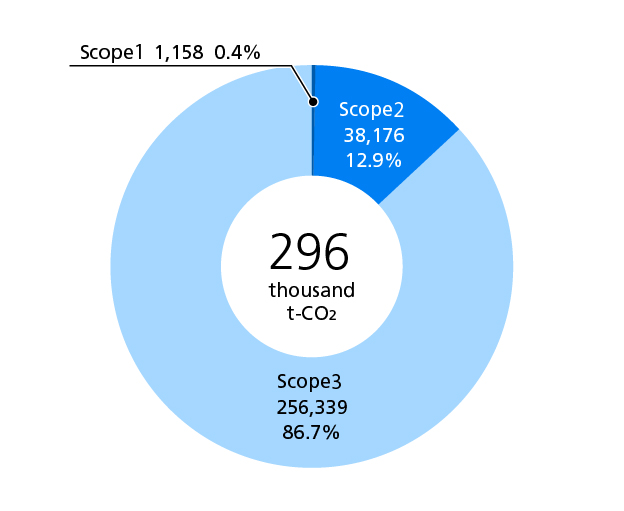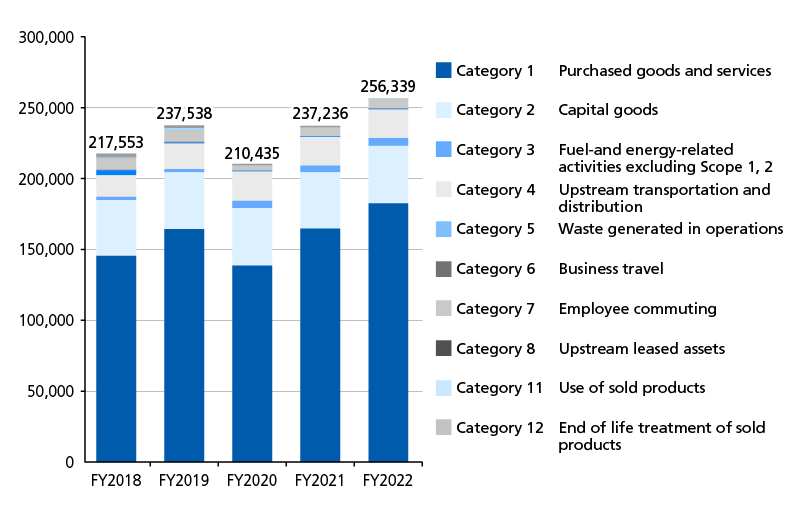CO2 Reduction
Reduction of CO2 emissions
TAMRON is reducing CO2 emissions in its business to realize a decarbonized society. TAMRON reviewed its basic unit targets up to now, changed it to a target of reducing CO2 absolute amount by 30% in 2030 compared to 2015.
Breakdown of CO2 emissions
CO2 accounts for most of the greenhouse gases released by TAMRON. As regards the sources of CO2 emissions (excluding distribution and logistics), electricity usage accounts for 99%, followed by heavy oil at 1%. Given this mix, our energy saving activities focus on electricity.

Change in CO2 emissions
In 2023, TAMRON set the target of reducing CO2 emissions by 9% compared with 2015 levels. In addition to the in-house consumption of renewable energy through solar power generation at the Foshan Plant in China and other sights, since 2022 non-fossil fuel certificates have been issued for roughly 30% of the electricity used at the head office, achieving net-zero CO2 emissions for the portion of electricity self-generated and covered by the certificates. TAMRON Optical (Foshan) Co., Ltd. in China has also purchased I-REC applying to part of its electricity usage, achieving net-zero CO2 emissions for the portion covered by the purchases. In part due to those effects, overall we were able to achieve our targets with a reduction of 12.0%, exceeding the target reduction.

Ascertaining CO2 emissions in the supply chain (Scope3)
In order to realize a low-carbon society, not only activities within TAMRON but also efforts throughout the supply chain including upstream and downstream are important. To promote our efforts, we have grasped indirect greenhouse gases (Scope 3) related to business activities in the supply chain.
Breakdown of Scope

Change in Scope 3

Please see below for details of scope 3 data.
Ascertaining CO2 Emissions in the Supply Chain (FY2023)Energy-Saving Initiatives
In 2017, TAMRON Optical (Foshan) in China began installing solar power generation systems. At the end of 2020 additional generating systems were installed, and in 2023 CO2 emissions were reduced by around 550t-CO2, which corresponds to roughly 2.2% of the emissions produced by the Foshan Plant. In addition, TAMRON has subscribed to the Green Basic Plan*1 that involves the issuance of non-fossil fuel certificates covering roughly 30% of the electricity used at the head office. The Foshan Plant also purchased I-REC*2 certificates covering part of its electricity usage in 2023. Combined, approximately 4,330tCO2 were reduced to effectively zero. Apart from this, we installed a new solar power generation system at TAMRON Optical (Vietnam) at the end of 2023 which began to operate fully in 2024. In 2024, we have set the target of reducing CO2 emissions by at least 12% compared with 2015 levels, and will make every effort to achieve this target.
*1 Green Basic Plan: A RE100-compatible effective renewable energy option that combines FIT non-fossil fuel certificates (with tracking) for the average electric power of all power sources provided by TEPCO Energy Partner, Inc. and non-FIT non-fossil fuel certifications (with information about power source attributes) specific to renewable energies.
*2 I-REC: Renewable energy-based electricity certificates certified and issued according to the rulebooks and electronic tracking systems based on them provided by the Netherlands-based non-profit organization I-REC Standard.
| Site | Measure | Reduction Effect (t-CO2) |
|---|---|---|
| Head Office | Subscribed to the Green Basic Plan by TEPCO Energy Partner, Inc., covering roughly 30% of the electricity used at the head office | 700* |
| Foshan Plant | Solar power generating system (since 2017) | 530 |
| Purchased I-REC (hydroelectric derived electricity) | 3,630* | |
| TAMRON Europe | Solar power generating system (all capacity sold) | 44 |
*Virtually zero CO2 emissions

